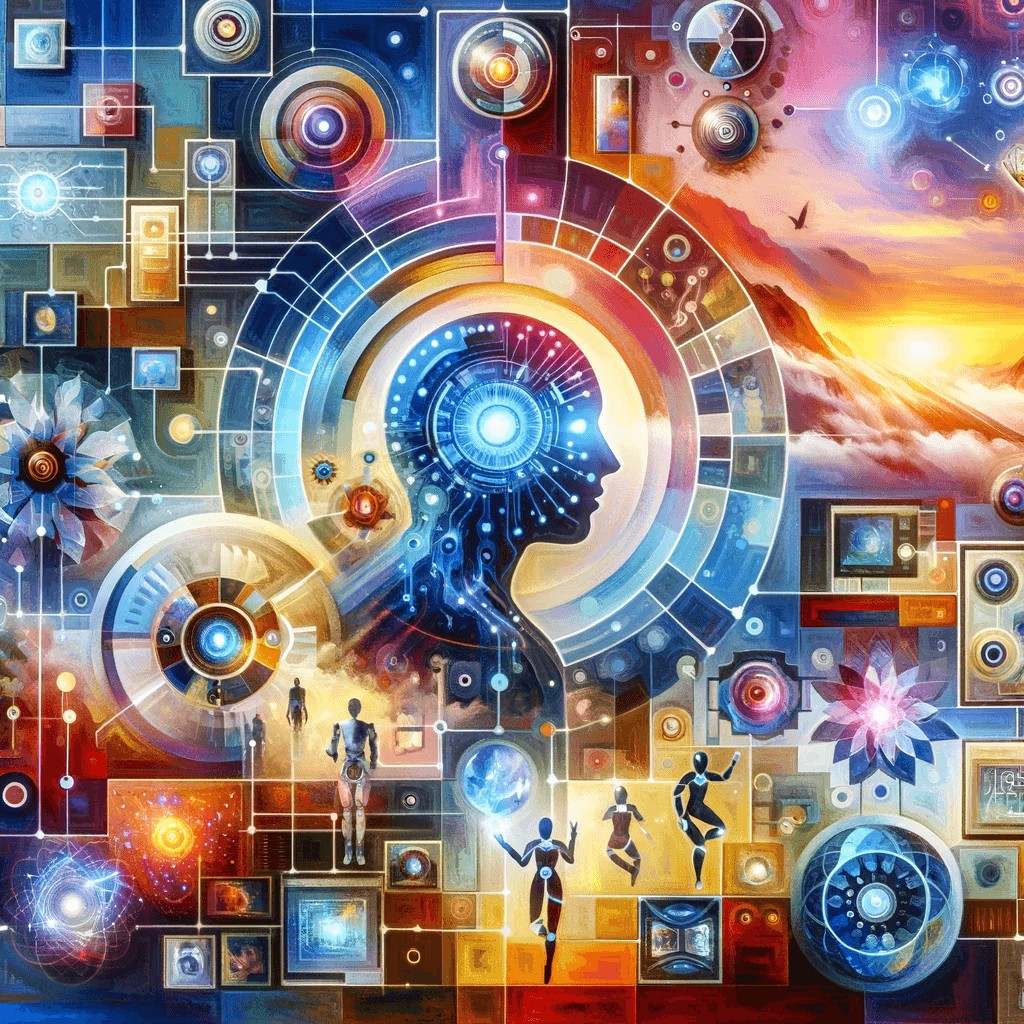By
Generative AI (like ChatGPT ), a technology that’s been gradually evolving since its inception in the 1960s with chatbots, has recently taken giant leaps forward. This AI marvel can craft various content – from text and images to audio and synthetic data. It’s the new age of content creation, where high-quality graphics, texts, and videos come to life in just a few seconds, thanks to user-friendly interfaces. ScienceFocus on Future Technology – GPT-3 offers a comprehensive overview to understand the history and evolution of this technology.
Generative AI models are a fusion of diverse AI algorithms. For instance, natural language processing techniques in text generation turn raw characters into meaningful sentences and concepts represented as vectors. The same goes for images, transformed into visual elements.
As generative AI continues to evolve, its applications are becoming increasingly versatile and sophisticated. From writing code to designing new medicine, the potential of this technology is vast. To explore more about the current state and prospects of generative AI, Al Jazeera provides an informative overview.
These advancements have set the stage for neural networks to encode and create. Technologies like Google’s BERT and OpenAI’s GPT 5 are now pushing the boundaries of generative AI, opening up possibilities once deemed science fiction. SMU’s resources on Generative AI and Chat GPT delve deeper into how these technologies shape the future.
In generative AI, three names stand out for their innovative contributions: Dall-E, ChatGPT, and Bard. Each platform showcases AI’s diverse capabilities in interpreting and generating content.
Google’s Bard, emerging in response to Microsoft’s GPT-powered Bing, is based on Google’s own LaMDA language models. Initially encountering hurdles, Google continually refined Bard, particularly its advanced PaLM 2 model, enhancing its efficiency and visual response capabilities. Bard’s evolution illustrates AI development’s dynamic and competitive nature in major tech companies.
Here’s a closer look at the ethical challenges posed by current generative AI technologies:
- Inaccuracy and Misinformation: Generative AI can sometimes produce misleading or incorrect information. This raises questions about its reliability, especially in critical areas like medical advice or legal information. For an in-depth analysis of this issue, The New York Times explores the challenges of AI accuracy.
- Source Ambiguity: Trusting AI-generated content becomes problematic when the sources and origins of information are unclear. This ambiguity can lead to challenges in verifying the authenticity and credibility of the information presented.
- Intellectual Property Concerns: Generative AI poses new forms of plagiarism risks, potentially undermining the rights of original content creators and artists. This issue is especially pertinent as AI becomes capable of producing complex and creative works. The New Yorker’s article on the ethical implications of AI-generated contentprovides further insights.
- Impact on SEO and Advertising: Existing business models, particularly those revolving around search engine optimization and advertising, may face disruption due to AI’s ability to generate content at scale.
- Propagation of Fake News: The ease with which generative AI can produce convincing fake news poses a significant threat to information integrity and public trust.
- Challenges in Authenticity: AI’s ability to create realistic fakes makes it difficult to discern genuine evidence from AI-generated fabrications, complicating legal and ethical scenarios.
- Social Engineering Threats: There is a real danger of AI impersonating individuals, leading to more effective and harmful cyber-attacks.
Generative AI is not just a single industry phenomenon; it has implications across various sectors. From finance to legal, manufacturing to media, healthcare to architecture, and gaming, the applications of generative AI are vast and varied. Each industry finds unique ways to harness this technology, whether for fraud detection, contract analysis, quality control, content production, drug discovery, design innovation, or game development.
How Is Generative AI Changing Creative Work?
Generative AI is revolutionizing creative fields by enabling artists, designers, and other creatives to explore vast ideas and iterations quickly. It democratizes aspects of creativity, allowing more people to engage in artistic and design processes. The Verge discusses how AI is transforming creativity.
he future of generative AI is bright and dynamic. Tools like ChatGPT, Midjourney, Stable Diffusion, and Bard have captivated a global audience and spurred the development of myriad training courses for developers and business users. The challenge is integrating these advanced AI capabilities seamlessly into our everyday tools and workflows, enhancing everything from grammar checkers to designing software and reshaping how we learn and train.
As generative AI continues to evolve, it promises to revolutionize fields like translation, drug discovery, content creation, and much more. Yet, with these advancements comes a profound reexamination of human expertise and its role in an increasingly AI-driven world.
The true impact of generative AI on our future remains to be fully understood. Still, one thing is sure: it will continue to redefine the boundaries of innovation and creativity, blending human ingenuity with the prowess of artificial intelligence. It all boils down to our decision to embrace the transformative power of generative AI responsibly, forging a future where technology amplifies human potential and creativity.
MARKETING Magazine is not responsible for the content of external sites.









